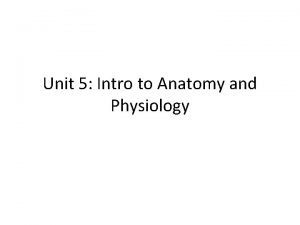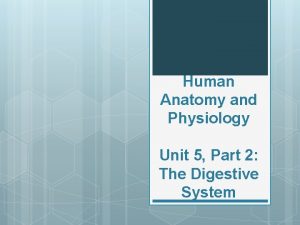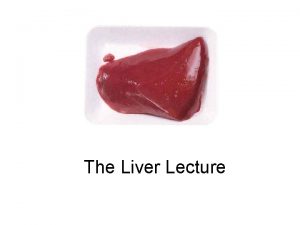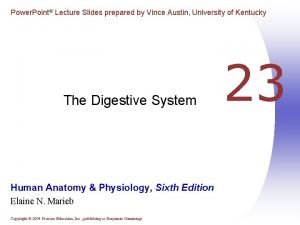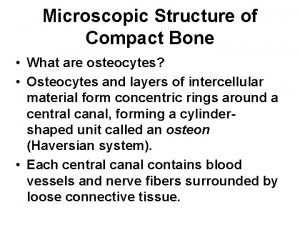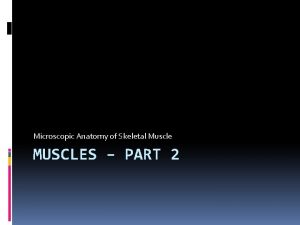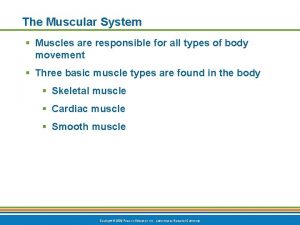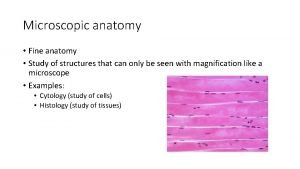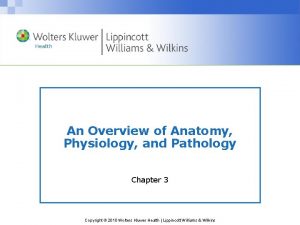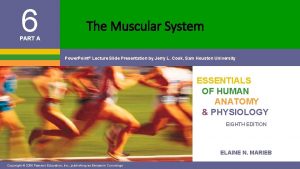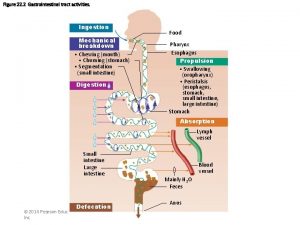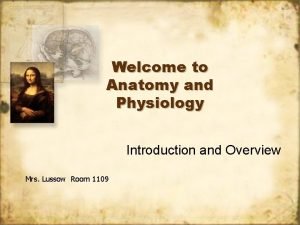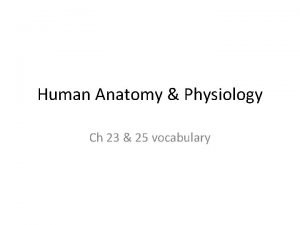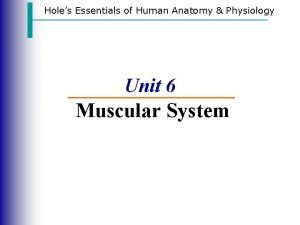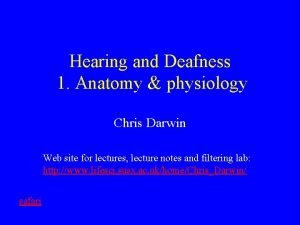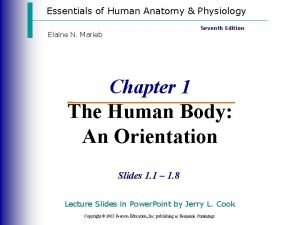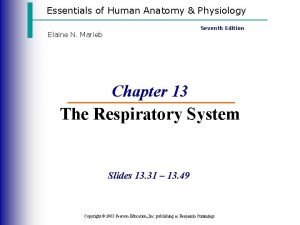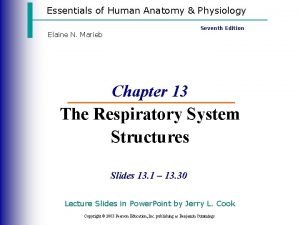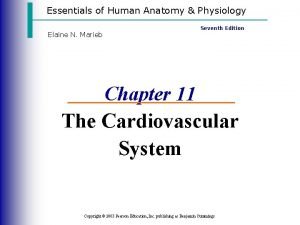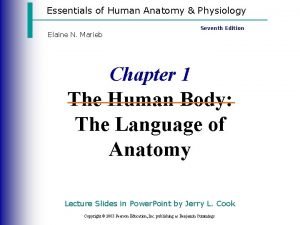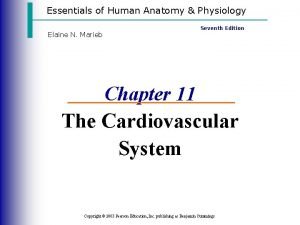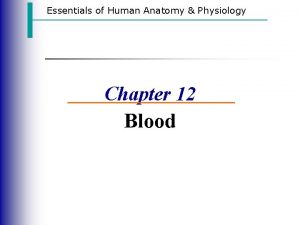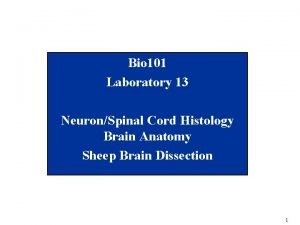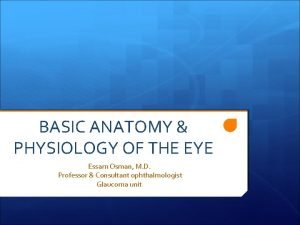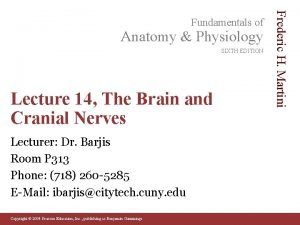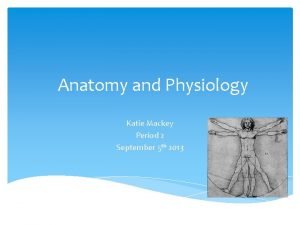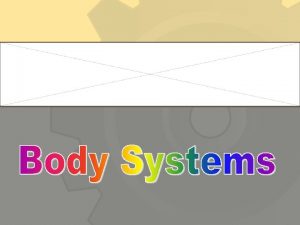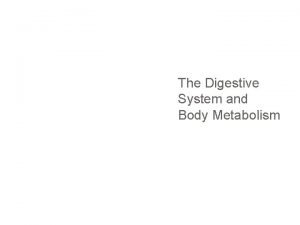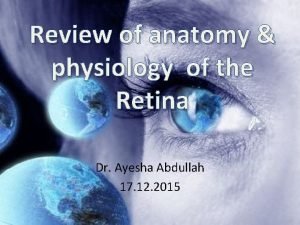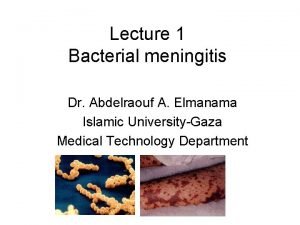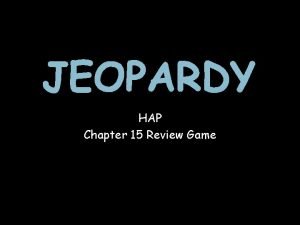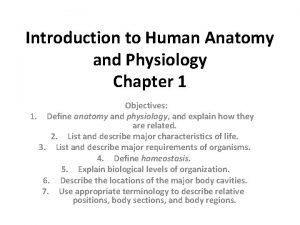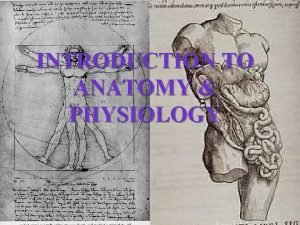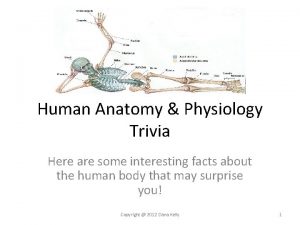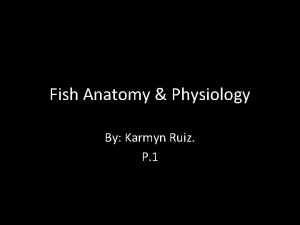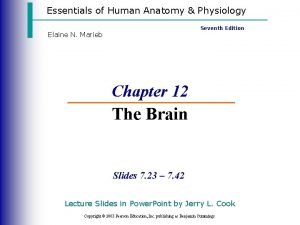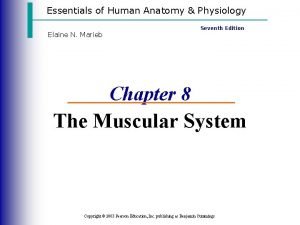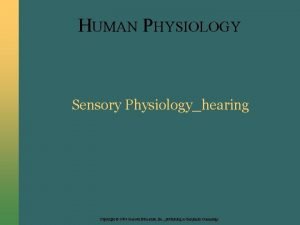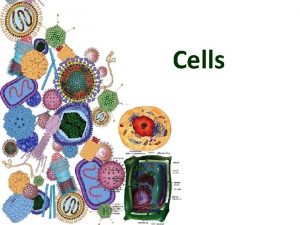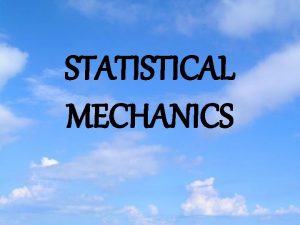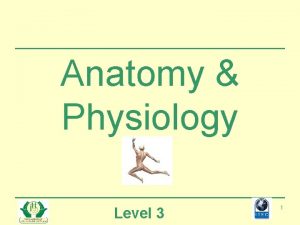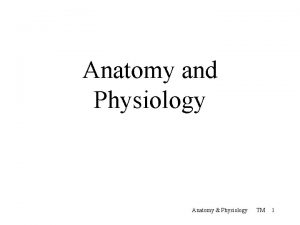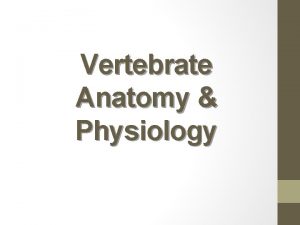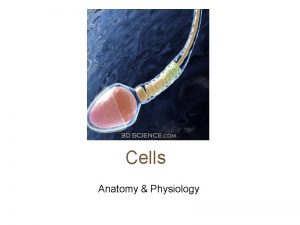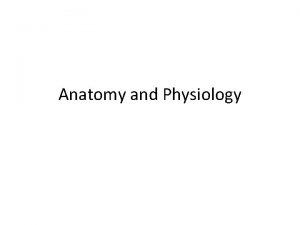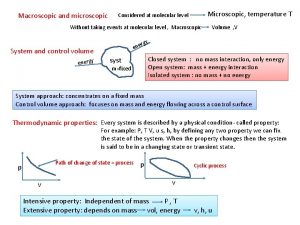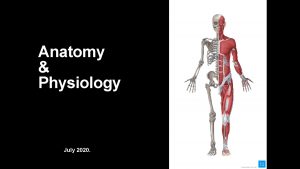Microscopic Anatomy Unit 2 Anatomy and Physiology Cells


































































































- Slides: 98

Microscopic Anatomy Unit 2 Anatomy and Physiology

Cells, Cells http: //www. youtube. com/watch? v= u 54 b. Rpb. SOgs

What do we know about cells? • Make up all livings things • Cells range from 1/3 -1/13 in comparison to the size of a dot in an exclamation point in your book. Some can be up to 2 feet • Cells are flat, round, threadlike, or irregular • Work together to allow proper functioning of life.

Draw what you know • In your notes, take 5 minutes to draw what a standard cell looks like

Cell structure • All human cells possess: – Nucleus (except mature RBC) – Organelles – Cytoplasm – Cell membrane

Cell membrane Also known as plasma membrane Acts as a protective covering Helps to hold cell contents together Responsible for allowing material in and out of the cell • It is “selectively permeable” • •

Transport Methods • Transport methods are used for the movement of materials across the cell membrane • Passive transport- requires no extra energy to complete the movement. • Active transport- requires additional energy to complete the movement

Passive Transport • Osmosis- water travels through selectively permeable membrane until concentrations are equalized. • Diffusion- most common transport- substance of higher concentration moves to an area of lesser concentration • Filtration- pressure is applied to move water across the membrane (like people getting pushed through turnstiles during rush hour) • Facilitated diffusion- variation of diffusion- substance is helped across the membrane (like an usher helping you to your seat)

Pathology connection • Read pages 64 and 65 in your book • In your own words explain how these diseases work.

Active Transport • Active transport pumps require energy (ATP) to move. • Like facilitated diffusion pumps use a protein carrier to move material • Endocytosis- used for the INTAKE of liquid and food. • Exocytosis is used to get substances OUT of the cell.

Pathology connection • Read page 67 and 68 • Put into your own words how this disease works.

Other Structures • Ribosomes- found in the ER or floating in cytoplasm. – Made of RNA– site production for enzymes and proteins that are needed for cell repair and reproduction. • Centrosomes- specialized that contain centrioles that help with cell division

Other Structures • Mitochondria- tiny bean shaped organelles that provide up to 95% of the body’s energy needed for cellular repair, reproduction, and movement. • Endoplasmic Reticulum- series of channels in the cytoplasm formed from folded membranes – Rough ER- (has ribosomes on the surface) synthesizes protein – Smooth ER- (no ribosomes) synthesizes lipids and steroids

Other Structures • Golgi Apparatus- receives protein from ER and prepares it to be shipped to the cell membrane and then eventually out. (exocytosis) • Lysosomes- contain powerful enzymes that clean up waste. • Cytoskeleton- provides shape of cell • Flagella- tail like whip used for movement

Pathology Connection • Read page 73 -75 in book

Mitosis • Cellular reproduction – Process of making a new cell, also know as cell division – Sorts chromosomes and is the only way to reproduce human cells asexually. • Eukaryotic- human cells • DNA- chromosomes must be completely copied for a new cell to divide • Bacterial cells (prokaryotic) divide in two through binary fission- simple division

Cell cycle • 2 major phases: – Interphase- not dividing but preparing for cell division by stockpiling materials – Mitotic phase- 2 major portions consist of dividing and sorting genetic material, and cytokinesis divides the cytoplasm • Phases of MITOSIS – Prophase – Metaphase – Anaphase – telephase

Phases • Prophase- nucleus disappears, chromosomes appear, centrioles move towards side of cell. • Metaphase- chromosomes line up in the middle of the cell. • Anaphase- chromosomes splits and because spindles pull them apart • Telophase- chromosomes go to opposite ends of cell, spindle disappears, and nuclei reappear. *Mitosis is used any time cells need to be replaced: repairs cuts to normal and heals broken noses. http: //www. youtube. com/watch? v=NR 0 md. DJMHIQ

Quiz!

Microorganisms • • Bacteria Viruses Fungi protozoa

Bacteria and Viruses • Bacteria: – make up largest group of pathogens. – Harmless bacteria (normal flora) live in our body • Virus: – More basic pathogen than bacteria – Infectious particle with protective covering- capsid – Can not grow, or reproduce themselves – Need a host cell

Fungi and Protozoa's • Fungi: – Can be one celled or multi-celled – Mycelia travels out cells to absorb nutrients – Can be good – Can be carried through spores (seed like /wind) • Protozoa: – One celled animal found in ponds and soil – Disease is caused by swallowing them or bitten by an infected insect.

TISSUES

Tissues • What is a tissue? – A collection of similar cells that act together to preform a function. – There are many different types: • • Epithelial Connective Muscle Nervous



Epithelial Tissue • Covers and lines the body and organs on the body • shapes– Squamous- flat – Cuboidal-cube shaped – Columnar-column shaped • Layers – Simple- one layer – Stratified- several layers – Pseudostratified (irregularly layered- skinny at the top and fat at the bottom)

Classes of Epithelia


Connective tissue • Most common tissue • Found in organs, bones, muscles, nerves, membranes and skin • Job is to hold things together and support • Types– Areolar – Adipose or Fat – Dense – Synovial membrane

Areolar • Fine delicate webs of tissue that help hold other tissues together

Adipose (fat) • We need these tissues in our bodies for it to properly function

Tendons, Ligaments and Bone • Dense tissue that act as cable wires and bridges for the body

Muscle Tissue • Provides means for movement in the body • Three types – Skeletal: attached to bones and causes movement by contracting and relaxing. Voluntary muscles – Smooth: form the walls of hollow organs. Example would be our digestive system organs. Involuntary muscles. – Cardiac- found in the walls of the heart. Work together to create the heart beat


Nervous Tissue • Acts as a rapid messenger service for the body. • Two types of nerve cells – Neurons- conductors of information – Neuroglia (glia)- help hold neurons in place • Dendrites are branchlike formation that make up part of the neuron.



Tour De Life • • Book issue Book Overview Book Procedures Assignment Expectations

Tissues Review • Cells of same type joined together • 60%-99% water • Groups of tissues – Epithelial • Shapes • Layers – Connective • types – Nerve • cells – Muscle • Smooth • Skeletal • cardiac

Organs and Systems • Organs: two or more tissues joined together for a specific purpose • Systems: organs and other body parts joined together for a particular function

Tissues Lab • Need paper and pencil • View each slide on each objective

Tissue ID • Tissue ID quiz • Do not move: – Stage – Objective – Microscope covering

Diagnostic Testing

Overview of Diagnostic testing • There are many types of diagnostic testing (too many to cover at one time) • A diagnostic tests helps determine the specific cause of various signs or symptoms • Important: test results are not the sole diagnosis of a patient. • Important: one abnormal test result does not make a diagnosis

How does diagnostic testing impact medical costs? • https: //www. youtube. com/watch? v=s. BUt. ENl n. Fic

Blood Basics • Plasma- liquid portion that makes up the blood. • Erythrocytes- Red, medium sized, 500 RBC: 30 platelets. Used to carry oxygen and other materials throughout the body • Leukocytes-White, largest, 1 WBC: 30 platelets. Used to fight infection. • Thrombocytes- Platelets, smallest 1: WBC 30: 500 RBC

Blood Testing • Blood samples- usually obtained from veins • Other ways to obtain blood – Pin prick (to test blood sugar levels) – Arteries (to test oxygen levels)

General blood disorders • Anemia- is red blood a cell disorder. (fewer RBC than normal) • Leukocytosis/Leukopenia- higher (cytosis) and lower (penia) amount of WBC than normal • Thrombocytopenia- fewer than normal platelets • What would patients present with for signs and symptoms?

Centrifuge • When blood is drawn it must be separated. • Spun at a very high speed • Heavy cells sink to bottom , and lighter cells stay on top

Types of blood tests • Complete blood count- count of all cells in the blood. • Pro Time- tests bloods ability to clot • PTT- also a test for clotting ability – Blood chemistry- is noted because disease will cause an alteration of their values.

Urine Testing • Although it is 95% water is contains thousands of dissolved substances. • Most substances found in the urine are found in the blood. • You CAN drink it. (up to a certain amount of hours after production) • Dipsticks- can be read at home by the patient and tests for properties of : bilirubin, glucose, hemoglobin, ketones, leukocyte, nitrite, p. H protein.

https: //www. youtube. com/watch? v=4 U_ xmf. Sw. YSw https: //www. youtube. com/watch? v=T u. Wiy 4_VDWY

Specific Urine test • When assessing urine note: color, specific gravity, concentration, odor, and p. H • Turbidity- determines if bacteria is present if cloudy • Sugar- can detect diabetes • Protein- continuous excretion can mean renal disease • Ketone- relates to metabolism. Should not have high amounts in the urine. • Bacteria- may indicate UTI • Sediment Examination- accounts for the accurate number of cells. Is less invasive than a biopsy or blood test

Fecal Testing • Aids in detection of GI issues, parasites, ulcerative colitis, and gall stones. • When assessing stool note: – Amount, consistency, form and shape – p. H – Color • • Yellow- diarrhea Tan- duct bile blockage Black- upper GI bleeding Red- lower GI bleeding – Blood in the stool may indicate cancer, colitis, diverticulitis, etc. – Mucous in the stool may indicate inflammation of the rectal canal

Cerebral Spinal Fluid Testing • CSF is found in the brain and in the central canal of the spinal cord. • CSF- acts a shock absorber, regulates intracranial pressure, and influences brain functions like homeostasis. • When assessing CSF note: – Color- should be colorless like water – Cell counts- should not contain WBC, and neutrophils, and mononuclear cells should be regulated.

Culture and Sensitivity Testing • Patient sample is taken from an infected area and placed in a growth medium to grow and then later be identified. • Different pathogens will grow in different shapes, sizes, and colors. (normal flora may also grow in the medium)

Cardiac Diagnostics • ECG/EKG- electrocardiogram- monitors how electrical impulses travel through the heart. • Holter Monitor- records all cardiac activity in a 24 hour period. • Stress Testing- walking at various speeds to induce physical exertion to determine symptoms that may indicate heart disease.

Scopes • Correct term is Endoscope- scope enters the body to obtain a better view of a region. • Different types of endoscopy– Otoscope- external ear exam (most common) – Bronchoscope- “head scope” examines regions of the head. – Gastroscope- examines the stomach – Laparoscope- examines abdominal region – Cytoscope- examines bladder anatomy

Pulmonary Function Testing • Assesses flow and volume of air into and out of the lungs. • Determines the level of lung function in diseases like asthma, emphysema, chronic bronchitis, and cystic fibrosis. • Results often depend on the participation of the patient.

Sleep Testing • Polysomnography- sleep studies • Looks at: – Air flow in and out of nose and mouth – Eye movement to determine sleep stage – Movement of breathing muscles – Monitor brain waves – Heart rate – Oxygen levels

Pharmacogenetics How Genetic Information Is Used to Treat Disease Maureen Knabb West Chester University West Chester, PA

At Children’s Hospital, Two 14 -yr-old Girls Meet in the Children’s Ward • Laura loves sports, is an excellent student, and plays soccer. The last few months she has been very tired and bruises easily. • Beth enjoys animals and theater. She seems to pick up colds easily and recently suffered from a high fever and swollen lymph nodes. • After a visit to the doctor, they have blood tests performed. 63

Blood Test Results Here are their results: RBC count Hemoglobin Hematocrit WBC count Platelet count Laura 2. 6 8. 2 23 6. 5 50 Beth 3. 5 11. 1 32 2. 0 120 Units million/mm 3 g/dl % thousand/mm 3 Turn to your neighbor and discuss these results. What differences do you see in the results between the two girls? Do you think that they have the same disease or a different disease? 64

Blood Cell Review Why are the girls having these symptoms? • Red Blood Cells = Erythrocytes • White Blood Cells = Leukocytes • Platelets = Thrombocytes Turn to your neighbor and discuss the structural similarities and differences that you see in the cells labeled 1 -5. 65

Red Blood Cells (RBCs) A. Structure • Biconcave disc • Lack nucleus and organelles B. Function • Transport O 2 via hemoglobin C. Normal values • RBC count = 4. 0 -5. 2 million/ mm 3 • Hemoglobin = 11. 8 -15. 5 g/dl • Hematocrit = 36 -46 % 66

Red Blood Cells (RBCs) D. Abnormal values • Low = anemia • Weakness • Fatigue • Shortness of breath • High = polycythemia • Can lead to blood flow difficulty 67

White Blood Cells (WBCs) A. Types • Neutrophil • Eosinophil • Basophil • Monocyte • Lymphocyte (shown here) B. Function • Combat infection C. Normal values • WBC count = 4. 5 -13. 2 thousand/ mm 3 68

White Blood Cells (WBCs) D. Abnormal values • Low • Immunodeficiency • Failure to make WBCs in the bone marrow • Leads to increased susceptibility to infection • High • Infection • Leukemia 69

Platelets A. Structure • Small cell fragments • Lack nucleus • Contain granules B. Function • Blood clotting C. Normal values • Platelet count = 140 -450 thousand/mm 3 70

Platelets D. Abnormal values • Low • Excessive bleeding • Bruising • High • Blood clots 71

CQ 1: The blood test result(s) that explain Laura’s fatigue is (are) _____. A) Low RBC count B) Low hemoglobin concentration C) Low hematocrit D) All of the above Laura Beth RBC count 2. 6 3. 5 Normal range (14 yr old F) 4. 0 -5. 2 million/ mm 3 Hemoglobin 8. 2 11. 1 11. 8 -15. 5 g/dl Hematocrit 23 32 36 -46 % WBC count 6. 5 2. 0 Platelet count 50 120 4. 5 -13. 2 thousand/ mm 3 140 -450 thousand/mm 3 72

CQ 2: Laura bruises easily because she has a ____. A) Low RBC count B) Low hemoglobin concentration C) Low hematocrit D) Low WBC count E) Low platelet count Laura Beth RBC count 2. 6 3. 5 Normal range (14 yr old F) 4. 0 -5. 2 million/ mm 3 Hemoglobin 8. 2 11. 1 11. 8 -15. 5 g/dl Hematocrit 23 32 36 -46 % WBC count 6. 5 2. 0 Platelet count 50 120 4. 5 -13. 2 thousand/ mm 3 140 -450 thousand/mm 3 73

CQ 3: The blood test result for Beth related to swollen lymph nodes and frequent infections is _____. A) Low RBC count B) Low hemoglobin concentration C) Low hematocrit D) Low WBC count E) Low platelet count Laura Beth RBC count 2. 6 3. 5 Normal range (14 yr old F) 4. 0 -5. 2 million/ mm 3 Hemoglobin 8. 2 11. 1 11. 8 -15. 5 g/dl Hematocrit 23 32 36 -46 % WBC count 6. 5 2. 0 Platelet count 50 120 4. 5 -13. 2 thousand/ mm 3 140 -450 thousand/mm 3 74

A Bone Marrow Biopsy Is Performed Both girls are diagnosed with acute lymphoblastic leukemia, an abnormal production of immature lymphocytes. 75

What is Acute Lymphoblastic Leukemia (ALL)? • Cancer of the white blood cells characterized by excess lymphoblasts. • Most common in childhood age 2 -5. • Symptoms of the disease include anemia, sensitivity to infection and bleeding due to the overcrowding of the bone marrow with the cancer cells. Bone marrow biopsy of patient with ALL 76

How Is ALL Treated? • Thiopurine drugs – 6 -mercaptopurine (shown here) • Prodrugs – Must be converted to the active form in the body • Guanine analogs – Act like guanine but disrupts DNA and RNA synthesis – Acts on rapidly dividing (cancer) cells but also GI, skin, hair follicles, bone marrow • Narrow therapeutic index – Dose to affect cancer cells is not much higher than toxic dose – Toxic dose = decrease ability of bone marrow to make blood cells • myelosuppression 77

CQ 4: After 3 days, Beth’s condition is deteriorating while Laura is feeling better. What could cause this difference in response to the treatment? A) Beth is more sensitive to the toxic effects of the drug. B) More drug is converted to the active form in Beth, leading to toxic levels. C) The drug is not excreted in Beth, leading to toxic levels. D) The drug is not inactivated in Beth, leading to toxic levels. E) All of the above. 78

Drug Metabolism Basics Prodrug Drug enzyme A Inactive drug enzyme I • Prodrug needs to be metabolized by enzyme A to be active – Poor metabolizers (low A activity) will need higher dose – High metabolizers (high A activity) will need lower dose • Drug needs to be metabolized to be inactivated – Poor metabolizers (low I activity) will need lower dose – High metabolizers (high I activity) will need higher dose 79

CQ 5: Which of the following mechanisms will lead to higher active drug dose? Prodrug Drug enzyme A Inactive drug enzyme I A) Increase activity of activating enzyme, decrease activity of inactivating enzyme B) Decrease activity of activating enzyme, decrease activity of inactivating enzyme C) Increase activity of activating enzyme, increase activity of inactivating enzyme D) Decrease activity of activating enzyme, increase activity of inactivating enzyme 80

How Are Thiopurines Metabolized? 81

Thiopurine Metabolism Active metabolite Important enzyme CH 3 Inactive metabolites 82

What Does the TPMT Enzyme Do? • TPMT adds a methyl group (CH 3) to the sulfhydryl group (SH) on the drug or its metabolites • Decreases the concentration of the active drug metabolites, thioguanine nucleotides – Thio-GTP – Thio-d. GTP • Acts indirectly to decrease the effective dose of the drug 83

What Is the Relationship between Drug Dose and TPMT Activity? 84

CQ 6: Individuals with ___ TPMT activity would show _____ TGN levels, leading to toxicity. A) low, low B) high, high C) low, high D) high, no change 85

TPMT Gene Has Different Forms (Alleles) • High enzyme activity – Homozygous dominant (wild type) • Medium enzyme activity – Heterozygous • Low enzyme activity – Homozygous recessive 86

Distribution of TPMT Activity in 298 Caucasian Adults 87

CQ 7: Based on the graph, how many Caucasian patients out of 300 would possess the low activity form (less than 5 U/ml) of the TPMT enzyme? A) Approximately 1 out of 300 B) Approximately 10 out of 300 C) Approximately 290 out of 300 88

Common Mutations of the TPMT Gene 89

How Does the TPMT Mutation Decrease Enzyme Activity? TPMT parameter Wild type *3 A allele *3 B allele *3 C allele Formation (fmol/ mg/ hr) 335 268 349 220 Degradation t 1/2 (hr) 18 0. 25** 6. 1** 18 ** significantly different than wild type protein Turn to your neighbor and try to determine which mutation is more important for the change in degradation, exon 7 or exon 10? 90

CQ 8: Beth has been diagnosed with the TPMT* 3 a gene. Her deterioration following treatment is due to: A) Decreased TPMT activity due to increased enzyme degradation. B) Decreased TPMT activity due to decreased enzyme formation. C) Decreased TPMT activity due to decreased enzyme degradation. D) Increased TPMT activity due to increased enzyme formation. 91

CQ 9: Effective treatment of individuals like Beth require: A) Increased dose of drug B) Decreased dose of drug C) No change in drug dose 92

What Is “Pharmacogenomics”? • The study of how genome-wide variation affects the body's response to drugs. • Benefits for patients include better drug selection for initial treatment and more accurate dosing. • Benefits for drug companies include genetic targeting of clinical trials for specific groups. • The terms “pharmacogenetics” and “pharmacogenomics” are often used interchangeably 93

Another Example: Clopidogrel (Plavix) Prodrug Drug enzyme A Inactive drug enzyme I • Taken by about 40 million people in the world to prevent blood clotting. • CYP 2 C 19 is responsible for its metabolic activation (see enzyme A in the diagram above). • At least one loss-of-function allele is carried by 24% of the white non-Hispanic population, 18% of Mexicans, 33% of African Americans, and 50% of Asians. • Homozygous carriers, who are poor CYP 2 C 19 metabolizers, make up 3% to 4% of the population. 94

CQ 10: Poor metabolizers of clopidogrel require _____ doses of drug to achieve an effective dose because the CYP 2 C 19 enzyme does not_____ the drug. A) Higher, activate B) Lower, activate C) Higher, inactivate D) Lower, inactivate 95

The Future of Pharmacogenomics • Pharmacogenomics is slowly being integrated into medical practice. • Understanding the consequences of metabolizer status and the frequency of variants in a given population will be helpful when advising patients about treatment options. • See the FDA Pharmacogenomic Biomarkers in Drug labels for a list of drugs and their associated genetic biomarkers. 96

Potential Barriers to Genetic Testing • Complexity of finding gene variations that affect drug response • Limited drug alternatives • Disincentives for drug companies to make multiple pharmacogenomic products • Educating healthcare providers • Fear of discrimination based on genetic test results 97

CQ 11: Which of the following do you think would be the greatest potential barrier for genetic testing? A) Complexity of finding gene variations that affect drug response B) Limited drug alternatives C) Disincentives for drug companies to make multiple pharmacogenomic products D) Educating healthcare providers E) Fear of discrimination based on genetic test results 98
 Anatomy and physiology of rbc
Anatomy and physiology of rbc Unit 26 agriscience
Unit 26 agriscience Anatomy and physiology unit 7 cardiovascular system
Anatomy and physiology unit 7 cardiovascular system Unit 26 animal anatomy physiology and nutrition
Unit 26 animal anatomy physiology and nutrition Body planes and axes
Body planes and axes Palatopharyngeal folds
Palatopharyngeal folds Bile juices
Bile juices Art labeling activity figure 23.5
Art labeling activity figure 23.5 Microscopic anatomy of compact bone
Microscopic anatomy of compact bone Microscopic anatomy of skeletal muscles
Microscopic anatomy of skeletal muscles Microscopic anatomy of skeletal muscle figure 6-2
Microscopic anatomy of skeletal muscle figure 6-2 Chapter 6 the muscular system figure 6-9
Chapter 6 the muscular system figure 6-9 Fine anatomy
Fine anatomy Histopathology is a subdiscipline of microscopic anatomy.
Histopathology is a subdiscipline of microscopic anatomy. Microscopic anatomy of skeletal muscle
Microscopic anatomy of skeletal muscle Gastric pit
Gastric pit Pns water view position
Pns water view position Chlorocruorin
Chlorocruorin Animal cell plant cell venn diagram
Animal cell plant cell venn diagram Masses of cells form and steal nutrients from healthy cells
Masses of cells form and steal nutrients from healthy cells Inspiration anatomy and physiology
Inspiration anatomy and physiology Tattoo anatomy and physiology
Tattoo anatomy and physiology Anatomy science olympiad
Anatomy science olympiad External parts of a leaf
External parts of a leaf Anatomy and physiology bone
Anatomy and physiology bone Anatomy of ulcer
Anatomy of ulcer Liver anatomy and physiology
Liver anatomy and physiology Epigastric region
Epigastric region Iliac regions
Iliac regions Chapter 14 anatomy and physiology
Chapter 14 anatomy and physiology Endomysium
Endomysium Http://anatomy and physiology
Http://anatomy and physiology Chapter 1 introduction to human anatomy and physiology
Chapter 1 introduction to human anatomy and physiology Physiology of appendicitis
Physiology of appendicitis Aohs foundations of anatomy and physiology 1
Aohs foundations of anatomy and physiology 1 Aohs foundations of anatomy and physiology 1
Aohs foundations of anatomy and physiology 1 Anatomical planes
Anatomical planes Anatomy and physiology chapter 8 special senses
Anatomy and physiology chapter 8 special senses Chapter 13 anatomy and physiology of pregnancy
Chapter 13 anatomy and physiology of pregnancy Science olympiad forensics cheat sheet
Science olympiad forensics cheat sheet Chapter 2 basic chemistry anatomy and physiology
Chapter 2 basic chemistry anatomy and physiology Gastric emptying ppt
Gastric emptying ppt Physiology
Physiology Chapter 7 anatomy and physiology
Chapter 7 anatomy and physiology Art labeling activity: figure 14.1 (3 of 3)
Art labeling activity: figure 14.1 (3 of 3) Chapter 10 blood anatomy and physiology
Chapter 10 blood anatomy and physiology Aohs foundations of anatomy and physiology 1
Aohs foundations of anatomy and physiology 1 Aohs foundations of anatomy and physiology 1
Aohs foundations of anatomy and physiology 1 What produces bile
What produces bile Anatomy and physiology chapter 15
Anatomy and physiology chapter 15 Cornell notes for anatomy and physiology
Cornell notes for anatomy and physiology Anatomy and physiology edition 9
Anatomy and physiology edition 9 Necessary life functions anatomy and physiology
Necessary life functions anatomy and physiology Holes anatomy and physiology chapter 1
Holes anatomy and physiology chapter 1 Holes essential of human anatomy and physiology
Holes essential of human anatomy and physiology Anatomy and physiology chapter 15
Anatomy and physiology chapter 15 Anatomy and physiology
Anatomy and physiology Medial lateral distal proximal
Medial lateral distal proximal Aohs foundations of anatomy and physiology 1
Aohs foundations of anatomy and physiology 1 Aohs foundations of anatomy and physiology 1
Aohs foundations of anatomy and physiology 1 2012 pearson education inc anatomy and physiology
2012 pearson education inc anatomy and physiology Animal physiology exam 1
Animal physiology exam 1 Welcome to anatomy and physiology
Welcome to anatomy and physiology Physiology of the foot and ankle
Physiology of the foot and ankle Integumentary system psoriasis
Integumentary system psoriasis Pancreas anatomy and physiology
Pancreas anatomy and physiology Anatomy and physiology vocabulary
Anatomy and physiology vocabulary Anatomy and physiology
Anatomy and physiology Anatomy and physiology
Anatomy and physiology Anatomy and physiology
Anatomy and physiology Body landmarks diagram
Body landmarks diagram Anatomy and physiology
Anatomy and physiology Anatomy and physiology
Anatomy and physiology Thyroid anatomy
Thyroid anatomy Dorsifelxion
Dorsifelxion Anatomy and physiology
Anatomy and physiology Anatomy and physiology
Anatomy and physiology Anatomy and physiology
Anatomy and physiology Anatomy and physiology
Anatomy and physiology Chapter 2 human reproductive anatomy and physiology
Chapter 2 human reproductive anatomy and physiology Human anatomy and physiology 10th edition
Human anatomy and physiology 10th edition Inferior view of sheep brain labeled
Inferior view of sheep brain labeled Anatomy and physiology of eye
Anatomy and physiology of eye Telencephalon
Telencephalon Irn.org anatomy and physiology
Irn.org anatomy and physiology Anatomy and physiology body parts
Anatomy and physiology body parts Figure 14-1 anatomy and physiology
Figure 14-1 anatomy and physiology Anatomy and physiology of the retina
Anatomy and physiology of the retina Animal tissue
Animal tissue Anatomy and physiology of meningitis ppt
Anatomy and physiology of meningitis ppt Jeopardy anatomy and physiology game
Jeopardy anatomy and physiology game Homeostasis definition
Homeostasis definition Anatomy and physiology
Anatomy and physiology Picture of human respiratory system
Picture of human respiratory system Physiology trivia
Physiology trivia Superior mouth fish
Superior mouth fish Transverse fissure
Transverse fissure Anatomy and physiology
Anatomy and physiology 2012 pearson education inc anatomy and physiology
2012 pearson education inc anatomy and physiology




